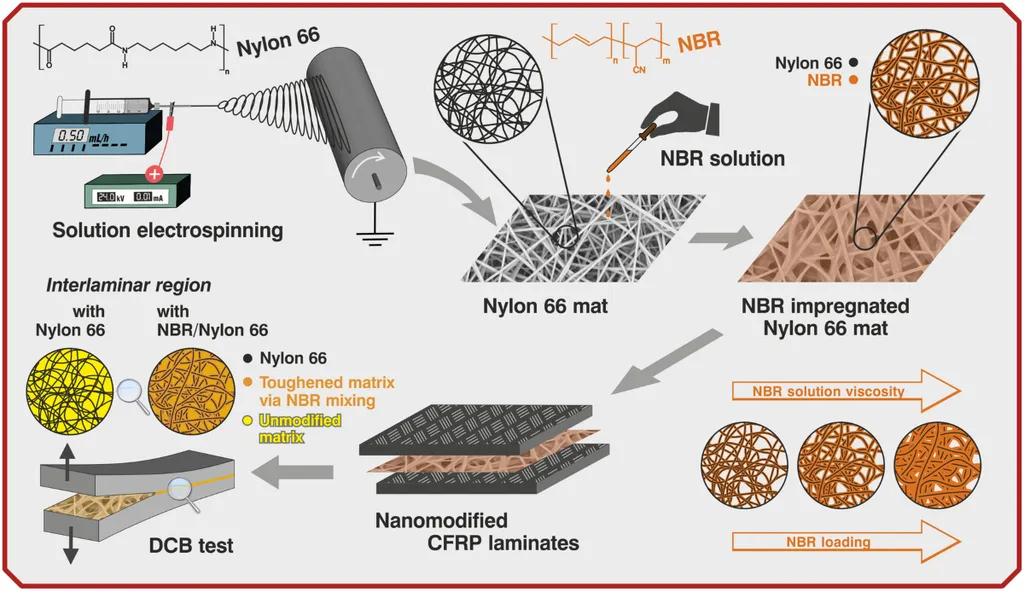In the quest for stronger, more durable materials, researchers have long been fascinated by the potential of fiber-reinforced composites. Now, a groundbreaking study published in Macromolecular Materials and Engineering, the English translation of Macromolekulare Materialien und Ingenieurwesen, is pushing the boundaries of what’s possible, with implications that could reverberate through industries from aerospace to energy. At the heart of this innovation is Gaigai Duan, a researcher at the Jiangsu Co-Innovation Center of Efficient Processing and Utilization of Forest Resources and the International Innovation Center for Forest Chemicals and Materials at Nanjing Forestry University.
Duan and his team have developed a novel approach to creating high-strength, tough thermoplastic polyurethane (TPU) composites reinforced with nylon-6 (PA6) fibers. The secret lies in the method of fiber integration, with the researchers exploring three distinct strategies: hot-pressing, electrospinning, and impregnation.
Electrospinning, a process that uses electric force to draw charged threads of polymer solutions, has been gaining traction in various industries due to its ability to create ultrafine fibers with high surface area to volume ratios. In this study, electrospinning emerged as a key player in enhancing the mechanical properties of the composites. “Electrospinning allows us to create a unique fiber-matrix interface,” Duan explains, “which significantly improves the overall strength and toughness of the composite.”
The results speak for themselves. The electrospun PA6/TPU composite (E-PA6/TPU) boasted a tensile strength of 28.03 ± 1.411 MPa and a Young’s modulus of 73.81 ± 4.16 MPa, making it a formidable contender in the world of high-performance materials. But the real game-changer is the impregnation method. This technique, which involves soaking the fibers in a polymer solution before composite formation, resulted in a composite with an elongation at break of approximately 240%. This means the material can stretch extensively without breaking, a property that could be crucial in applications where flexibility and durability are paramount.
The implications for the energy sector are vast. In offshore wind turbines, for instance, the blades are subjected to immense forces and need to withstand harsh environmental conditions. A material that is both strong and tough could significantly extend the lifespan of these components, reducing maintenance costs and downtime. Similarly, in the oil and gas industry, pipelines and other infrastructure could benefit from the enhanced durability of these composites, leading to safer and more efficient operations.
Moreover, the impregnation method’s simplicity and versatility open up new avenues for innovation. As Duan notes, “The impregnation method is not limited to PA6 fibers and TPU. It can be extended to other thermoplastic polymers and fiber-reinforced composites, offering a broad range of possibilities for material scientists and engineers.”
The study, published in Macromolecular Materials and Engineering, marks a significant step forward in the development of high-performance composites. As industries continue to demand materials that can withstand increasingly challenging conditions, innovations like this one will be crucial in driving progress. The future of materials science is here, and it’s looking stronger and tougher than ever.

